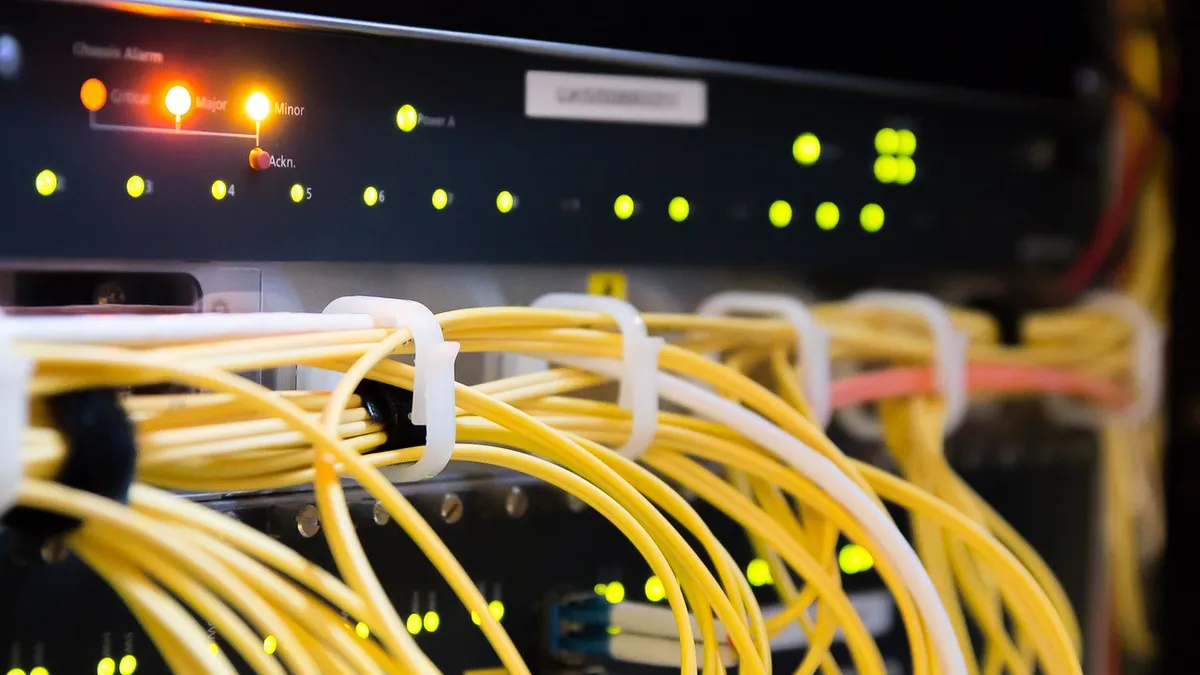Dive Brief:
- In its ninth annual E-Rate Trends Report, compliance firm Funds For Learning finds the Federal Communications Commission's (FCC) connectivity discount program for schools and libraries remains crucial to providing broadband access for many, with 88% of applicants expecting bandwidth needs to grow in the next three years.
- Among the findings: 82% of E-rate applicants report that home internet access for students or library patrons remains insufficient, 70% find that the program's competitive bidding rules are lowering internet service prices, and 88% report WiFi is "extremely important" to meeting their goals, up from 79% in fiscal year 2018.
- Funds For Learning also notes that the 2019 report was completed by 1,763 applicants from every state and territory, a record-high level of participation that represents 8% of all E-rate applicants nationally.
Dive Insight:
The E-rate program's importance to school connectivity can't be understated as digital lessons become more ubiquitous nationwide and states continue transitioning annual standardized assessments to the web. Where many low-income schools in rural and urban communities alike have lacked both access and on-site infrastructure to connect students to reliable broadband, the E-rate program has often been the difference-maker.
Funds For Learning's annual report aims to provide policymakers with the information they need to continue providing value to stakeholders through the program while adapting to meet their changing needs.
"Like the technology it supports, the E-rate program must continue to evolve and mature," Funds For Learning CEO John Harrington wrote in the report. "The past success of this program is not happenstance and its future success should not be taken for granted. New regulations currently being considered hold the opportunity to increase or decrease the program’s efficacy, and the results will impact millions of lives."
Among the upcoming changes: New regulations for category two budgets, which cover internal connections and include eligible products, such as access points, routers, switches, hubs and wiring.
Notably, Funds For Learning CEO John Harrington detailed for Education Dive at this year's International Society for Technology in Education conference how the program's competitive bidding rules resulted in lower internet service prices for schools. Schools provide their own level of competition to the fold by weighing an investment in laying their own broadband infrastructure. Even the consideration of such a move led local service providers to come to the table with more competitive offers.
This is a particularly critical move for rural schools in areas where the local infrastructure hasn't yet been put in place by service providers, who often consider the greater return on investment of first installing broadband fiber in higher-population areas. FCC Commissioner Michael O'Reilly, however, has expressed concern over this approach.
It's worth noting that FCC Chairman Ajit Pai has previously expressed interest in better connecting rural schools and districts to high-speed broadband due to their having long been underserved when it comes to the necessary infrastructure. Whether the program could eventually expand to help schools close the "homework gap," which results from students lacking home internet access to complete digital assignments, remains to be seen. But addressing that issue has long been a concern for Commissioner Jessica Rosenworcel.
On a final interesting note, 81% of applicants reported satisfaction with the program's management under Radha Sekar, who was appointed by Pai to improve "customer service" in the E-rate program.














